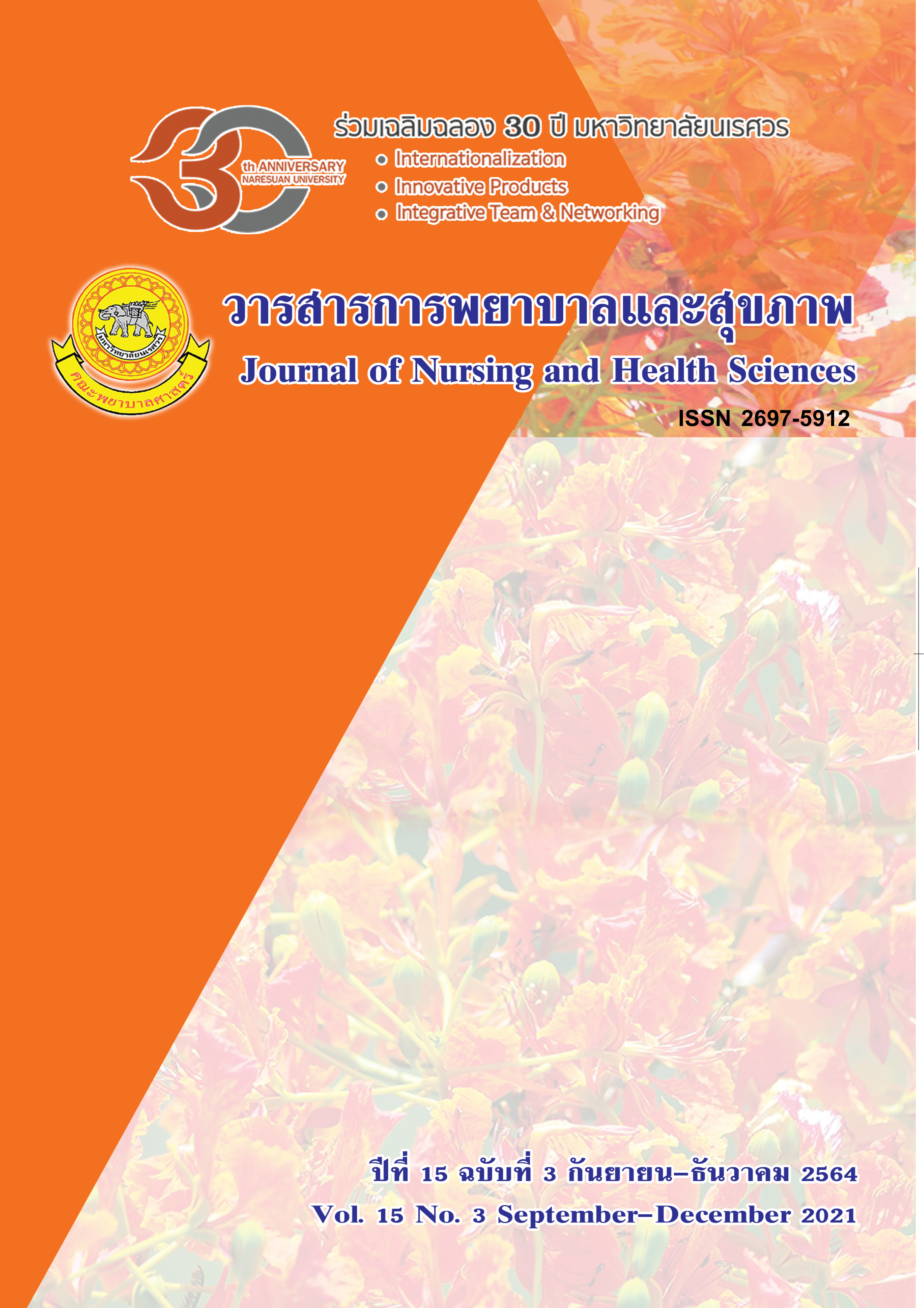Perceptions of Nursing Competence among New Graduate Nurses in Boromarajonani College of Nursing Buddhachinaraj
Main Article Content
Abstract
This survey research aimed to examine the perceptions of nursing competence of newly graduated nurses in Boromarajonani College of Nursing Buddhachinaraj by using nursing competence framework of Thailand Nursing and Midwifery Council. The samples comprised of 142 new nurses who graduated in 2020 academic year. The self-report questionnaire was used for data collection, including demographic data form and the Professional Nurse’s Competence Questionnaire. This questionnaire consisted of 8 domains: 1) ethics, code of conduct and law, 2) nursing and midwife practice, 3) professional characteristics of nursing, 4) leadership, management and quality improvement, 5) academic and research skills, 6) communication and relationship, 7) information technology and 8) social skills. The questionnaire was validated by three experts and the reliability, using Cronbach’s alpha was 0.96. Descriptive statistics were used to analyze data.
The results of this study showed that new graduates perceived themselves as high competences (Mean = 4.32 S.D =0.35). The level of nursing competence of each domain was also at a high level which the domain of ethics, code of conduct, and law was the highest score (Mean = 4.41, SD=0.44), followed by the domain of professional characteristics of nursing (Mean=4.40, SD=0.45) whereas the information technology domain was the lowest score (Mean=4.26, SD=0.50), followed by the domain of leadership, management and quality improvement (Mean=4.29, SD=0.43).
The results are useful for nursing curriculum and pedagogy development to strengthen nursing students’ performance, according to professional requirements. Moreover, these can be used as an agreement between educational institutions and employers of the nurses in clinics about the training program for new graduated nurses to get better the nursing competence, especially the performance of information technology and management
Article Details

This work is licensed under a Creative Commons Attribution-NonCommercial-NoDerivatives 4.0 International License.
References
Boromarajonnani College of Nursing Buddhachinaraj.
(2017). The bachelor of nursing science curriculum
(Revised. B.E. 2017). Phitsanuloke: Boromarajonnani
College of Nursing Buddhachinaraj. [In Thai].
Boromarajonnani College of Nursing Buddhachinaraj.
(2019).Annual report.Phitsanuloke: Boromarajonnani
College of Nursing Buddhachinaraj. [In Thai].
Khumyu, A., Chupan, S., Puttaruksa, L., Rattanajarana,
S., Songaiad, D., & Chunchomgul, C. (2021).
Factors related to professional nursing competency among nursing students at a university in
the Eastern Region. The Journal of Faculty of
Nursing Burapha University, 29(1), 1-12.
[In Thai].
Kreedi, F., Brown, M., Marsh, L., & Rogers, K. (2021).
Newly graduate registered nurses' experiences
of transition to clinical practice:A systematic
review. American Journal of Nursing Research,
(3), 94-105. Doi:10.12691/ajnr-9-3-4.
Kuewong, G., & Oumtanee, A. (2020). Self-development
of newly graduated nurses working in an
intensive care unit at a university hospital.
Thai Red Cross Nursing Journal, 13(1), 90-101.
[In Thai].
Piphatpawan, B. (2019). Role transition from student
nurses to registered nurses. Journal of nurses
Association of Thailand Northern Office. 25(2),
-62. [In Thai].
Preechakoon, B., Molek, R., Chuwongin, D., Gongmuang,
P., & Sombutboon, M. (2021). Nursing in data
technology Era. The Journal of Chulabhorn Royal
Academy. 3(1), 19-39. [In Thai].
Rojanapitayakorn, V. (2019). Editorial: Health situation
and trends in Thailand, 2018-2020. Journal of
Health Science, 28(2), 1-2. [In Thai].
Srisaard, B. (2017). Basic research. (10th ed.). Bangkok:
Suweeliyasan company. [In Thai].
Thailand Nursing and Midwifery Council. (2018).
Nursing competencies of registered nurses.
retrieved 20 April 2019 from https://www.tnmc.
or.th/images/userfiles/files/004.pdf. [In Thai].
The Ministry of Education. (2018). Thai qualification
framework for higher education B.E 2018.
retrieved 15 March 2022 from https://www. tnmc.
or.th/images/userfiles/files/Edit(1).PDF. [In Thai].
The Nurses' Association of Thailand. (2014). Nurses: A
force for change. A vital resource for health.
Bangkok: The Nurses' Association of Thailand.
[In Thai].
Tontakool, S., & Promla, V. (2015). The perception of
nurses in the overall performance of nursing
students Private University in Pathumthani
Provine. SSRU Graduate Studies Journal. 2(2),
-445. [In Thai].
Wongyai, V. & Patpol, M. (2019). Authentic competencybased assessment. Bangkok: Center of innovative
curriculum and learning. [In Thai].


